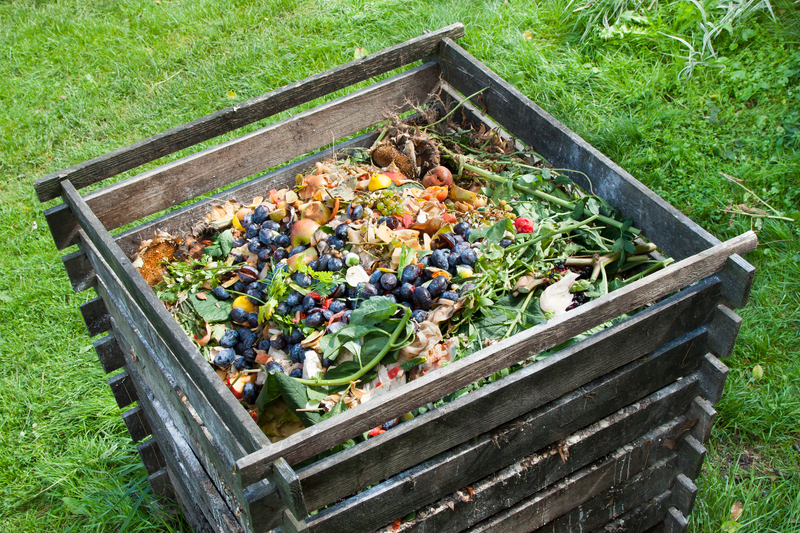Exploring the Environmental Benefits of Electronic Waste Recycling
In today's tech-driven world, electronic devices have become essential in our daily lives. However, with rapidly advancing technology, these gadgets become obsolete faster than ever before, leading to a significant increase in electronic waste--or e-waste. As such, e-waste recycling has emerged as a critical practice in combating environmental degradation.
Understanding Electronic Waste
Electronic waste includes discarded electronic devices--everything from old smartphones to defunct televisions. These items can be hazardous if not disposed of properly, due to the presence of toxic materials residing within these electronics. Mercury, lead, and cadmium are common toxic substances found in e-waste, which can contaminate soil and water if improperly managed.
Common Sources of Electronic Waste
- Smartphones and tablets
- Computers and laptops
- Televisions
- Audio/visual equipment
- Household appliances like refrigerators and microwaves

The Importance of E-Waste Recycling
Recycling electronic waste is not only beneficial for the environment but also necessary for sustainable resource management. The process involves recovering valuable materials such as copper, gold, and silver from old electronics and repurposing them for new products. Let's delve deeper into the environmental benefits of e-waste recycling.
Reduction in Pollution and Toxicity
When e-waste is not recycled, it often ends up in landfills or is incinerated, leading to severe environmental issues:
- Air Pollution: Burning e-waste releases harmful substances into the air, contributing to air quality degradation.
- Soil Contamination: Toxic elements can seep into the ground when e-waste is improperly disposed of, affecting soil fertility and health.
- Water Pollution: Contaminated rainwater runoff can carry toxins into water bodies, impacting aquatic life and drinking water supplies.
Conservation of Resources
Valuable raw materials can be recovered through the recycling of e-waste, reducing the need for raw material extraction and preserving natural resources:
- Copper: Essential for manufacturing new electronics, reducing the need for mining.
- Gold and Silver: Used in circuit boards and other components, recycling reduces demand in mining activities.
- Plastics and Glass: Can be repurposed, diminishing the dependency on new plastic production and decreasing glass manufacturing.
Energy Conservation
Recycling e-waste is significantly more energy-efficient compared to producing raw materials from natural resources. For instance, recycling aluminum saves up to 95% of the energy compared to producing it from raw ore. This energy saving translates into a lower carbon footprint, aiding in the fight against climate change.
Challenges in Electronic Waste Recycling
Lack of Awareness and Infrastructure
Despite its importance, e-waste recycling is often undermined by public awareness and infrastructural challenges. In many regions, especially in developing countries, there is limited access to proper recycling facilities. Additionally, many consumers are unaware of the impact of improperly disposing of electronics.
Complexity of Recycling Process
Recycling e-waste is not as straightforward as it sounds. Devices are composed of various materials that require specific separation techniques. Furthermore, rapid changes in technology mean that recycling processes must continually evolve to accommodate new and diverse types of e-waste.
Possible Solutions and Innovations
To overcome these challenges, various strategies and innovations are being employed worldwide:
Improving Legislation and Policies
Governments are beginning to recognize the importance of regulating e-waste disposal. Effective policies, such as implementing extended producer responsibility (EPR), can hold manufacturers accountable for the end-of-life management of their products, encouraging them to design products that are easier to recycle.
Innovative Recycling Technologies
- Advanced Recovery Techniques: New technologies, such as hydrometallurgical processes, are becoming in place to efficiently extract valuable metals from e-waste with minimal environmental impact.
- Automation and AI: Using robotics and artificial intelligence to improve the efficiency and accuracy of sorting and recycling processes.

How Consumers Can Make a Difference
Individuals play a vital role in fostering an eco-friendly approach to electronic waste. Here are some ways consumers can contribute:
Responsible Purchasing and Disposal
- Think Before Buying: Consider the necessity of new devices and prioritize those with longer life spans.
- Proper Disposal: Utilize authorized recycling centers or take-back initiatives offered by manufacturers to responsibly dispose of old electronics.
Acknowledging the 3Rs: Reduce, Reuse, and Recycle
- Reduce: Minimize the purchase of new electronics when possible.
- Reuse: Donate or sell functional gadgets rather than discarding them.
- Recycle: Avoid throwing electronics in the trash by opting for eco-friendly recycling options.
Conclusion
As our reliance on electronics grows, so does the responsibility to manage their waste. Exploring the environmental benefits of electronic waste recycling highlights the substantial impact it makes in preserving our planet. By fostering awareness, improving infrastructure, and promoting responsible consumer behavior, we can pave the way for a more sustainable future.
Ultimately, by prioritizing the recycling of e-waste, we can significantly reduce pollution, conserve natural resources, and drive energy savings, thereby ensuring a healthier planet for generations to come.